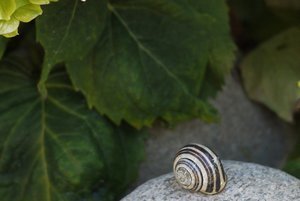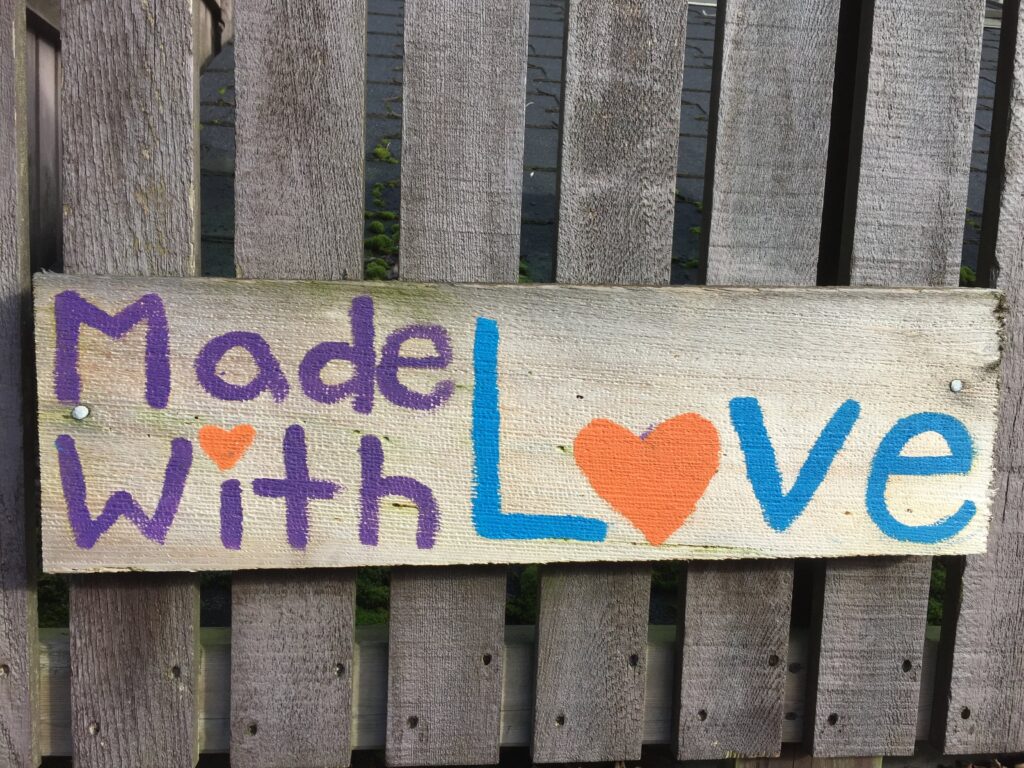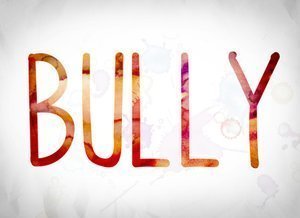
Pippin loves to herd. He loves to herd alpacas, which is a good thing because this is his job on the farm. He herds turkeys, which is not his job. He tries to herd people, which is often amusing and harmless. He herds cats, which is next to impossible.
But he also tries to herd cars, which is downright dangerous.
Pippin is a mini-Australian shepherd and sheltie cross. For him, herding is an instinct. It is part of who he is. We cannot prevent him from herding, nor would we want to. When he goes for the cars, however, we wish the herding instinct had an off switch! Because he cannot help it, it becomes our job to keep him safe: we warn guests to slow down on the driveway, we try to keep him inside when we’re expecting someone, we call him to our side to keep him out of harm’s way.
 Pippin is also still a puppy, and he loves to chew! Or more like, Pippin needs to chew. His favorite flavours are socks and shoes. He is partial to sandals and flip flops – perhaps something about the saltwater smell. We have come to the place where we expect something to be destroyed when we come home from being away, even just for a few hours. The question becomes: what will it be this time? It becomes a bit of a game (although not a fun one). Will it be my daughter’s favorite flip flops? My husband’s wool socks? My expensive sandals? Again, this is an instinct for Pippin. He is driven to it.
Pippin is also still a puppy, and he loves to chew! Or more like, Pippin needs to chew. His favorite flavours are socks and shoes. He is partial to sandals and flip flops – perhaps something about the saltwater smell. We have come to the place where we expect something to be destroyed when we come home from being away, even just for a few hours. The question becomes: what will it be this time? It becomes a bit of a game (although not a fun one). Will it be my daughter’s favorite flip flops? My husband’s wool socks? My expensive sandals? Again, this is an instinct for Pippin. He is driven to it.
Now, I believe he knows it is wrong. When the mauled shoe is held up in front of his face, he winces and takes his “I’m sorry” pose. However, in the moment, there is no hesitation, no memory of the appropriateness of his chosen snack. He just needs to chew! And chew he does. Because he cannot help it, it becomes our job to keep our treasures safe. We put things up high, we put shoes in boxes, we close doors. He still finds things to chew, like a game of Uno in a scrumptious cardboard box, but we can minimize the damage.
Our children, too, have instincts. Emotions are stirred up within them, and they are often moved by frustration, by alarm, and by pursuit. When something isn’t working, they often act impulsively out of these instinctive places.
They forget in their frustration that it is not okay to hit or that they care about their little sister. They may remember before, or after, but not in the moment! It therefore becomes our job to keep them, and their siblings, out of harm’s way. Can we find out what isn’t working for them? Can we find something else to hit, or find another way to get the frustration out?
If they are getting in trouble at recess, if their impulses keep getting the better of them, it is our job as adults to come alongside and keep them safe – maybe a run around the track together, maybe a visit to the library, maybe a special project to keep them out of harm’s way.
It may be that when a young child anticipates going to school, they may move to pursue, clinging to mommy and refusing to go. They forget in the moment that mommy will still be there, or that part of them likes school. All they feel at the time is the alarm and they are moved to keep close.
These are instincts. By nature, instincts are impulsive. As a child grows older, they become more capable of tempering these instincts, bringing in the ‘on-the-other-hand’ thoughts and feelings. But this doesn’t happen until at least age five, and even then can take years, especially when the feelings are intense. Goodness knows that as adults, we still have trouble tempering our own instincts and emotions! And I am not sure when this happens for puppies …
And so, while we wait for our children to mature, it helps to see that instincts are a natural part of being a child. While I wait for Pippin to remember in the moment (instead of after the fact), that it is not okay to chew his family’s belongings or herd cars, it calls for patience and creativity on my part – patience in not expecting Pippin to be other than a puppy, and creativity in finding ways to keep everyone (and everything) safe.
We can anticipate the instincts, the heightened emotion, and move to change their circumstances. Or we can move to help our children release the built up frustration for all the things that aren’t working for them – through words, through throwing sticks in the water, through screaming (just maybe not in the grocery store or at your mother-in-law’s!), or through the tears of disappointment.
And we will undoubtedly need to make adjustments and compensate for our youngsters’ impulsive instincts. In Pippin’s case it meant finding him a chew toy, something he could destroy without getting in trouble. It meant finding him something else to herd (and keeping him away from the sheep and the ducks next door!), taking him on walks, letting him run outside to get some of that energy out. Once we see what is needed, we can find our way to the child’s side, trusting that nature has a plan.

 I cried all the way to school drop-off this morning. My daughters, buckled in their booster seats in our minivan, heard the voice of Hillary Rodham Clinton playing through the car radio as together we listened to her concession speech. My seven- and eight-year-olds glanced back and forth from each other, then back to me, meeting my eyes in the rearview mirror to smile, somewhat nervously. They weren’t sure how to react as they watched Mommy’s emotions come out on the rainy drive to school.
I cried all the way to school drop-off this morning. My daughters, buckled in their booster seats in our minivan, heard the voice of Hillary Rodham Clinton playing through the car radio as together we listened to her concession speech. My seven- and eight-year-olds glanced back and forth from each other, then back to me, meeting my eyes in the rearview mirror to smile, somewhat nervously. They weren’t sure how to react as they watched Mommy’s emotions come out on the rainy drive to school.
Stop crying, I told myself. Put on a brave face. For your kids. Make sure they see it’s all okay.
“And to all of the little girls …” Hillary said.
My quiet tears turned to sobs, looking back at my own girls as if my presidential candidate were talking right to them. They sat up tall, proud to be addressed. My eldest whispered, “That’s us.”
“… never doubt that you are valuable and powerful and deserving of every chance and opportunity in the world to pursue and achieve your own dreams.”
Tears momentarily sequestered, I clapped, told my kids to listen. “That’s right!” I said. “She’s right.”
But I couldn’t help myself. As Hillary’s speech went on and the reality of the election results kept sinking in, I began to cry again. Only this time, I decided to stop beating myself up for it.
The reality is I hadn’t sheltered my children from the emotions of this election, anyway. Starting with the national conventions over the summer, I was alarmed, anxious, and at times, angry. I’m a vocal person by nature, a messy person by nature. A human by nature. It was all too much, and even as I tried to remain a steady rock for the sake of not alarming my children, I couldn’t always contain the emotions stirred up inside me.
I wasn’t alone. Everywhere around me, I watched other adults’ anxiety pour out along with mine in our political Facebook rants, frantic support of “Black Lives Matter” school programs, and fierce opposition to the Standing Rock situation. Many a mama friend shared passionate posts and articles on social media, determined to educate our preschoolers, kindergartners, elementary-aged children as change agents to make this next generation different, damn it. We can do better than this. Change. Everything. Now.
We have been stuck in what Dr. Gordon Neufeld refers to as the traffic circle of alarm. Alarm – an almost constant dose of it – dumped us into the circle, with only three routes to drive ourselves out: changing the situation, moving to attack, or grieving.
An election isn’t about grieving. What moves us in elections is the opportunity for change. (And in this election, what also moved us was a typhoon of attacking energy.)
But the concession speech has been delivered. The U.S. election is over. We cannot change the outcome – at least of the election. For those who did not see our candidate of choice into the presidential office, it is time to grieve. And it is okay to grieve in front of our children, as long as they know it is with control and we are still there for them, no matter what.
Me crying in front of my children doesn’t mean it’s not all okay, as I first admonished myself. It means I know when to give myself permission to express what is inside. It means my children know that I get disappointed sometimes, too. It means the next time they don’t get their way, they’ll believe me when I say I know how much it hurts. It means my kids see that I’m a person who cares. It exposes my soft heart – the best chance I have of keeping their soft hearts that way.
In the midst of my grief, they still see me walk them into school, help them unload their backpacks into their cubbies, remind them to wash their hands. They see me getting and giving hugs to the other parents, and teachers, as together as a community we cry a little more.
They see, through the tears, because of the tears, that we are okay.

I love the sub-title of Deborah MacNamara’s new book: Making Sense of Preschoolers (Or Anyone Who Acts Like One). When I read this title, immediately some youths and adults come to my mind, to whom I would like to say: “Don’t behave like a preschooler!” Or, “Don’t be so childish!”
I would love to say this to them, perhaps with a raised voice, perhaps even add a little shaking to it … tempting fantasies. But fantasies only, because I know it would be of no use whatsoever to do this. As the word child-ish says: For young children it is normal to behave “childish.” For older children or adults it is not normal to act childish, they are supposed to behave adult-ish. But no one chooses to act childish. It is not the decision of our free will to be or not to be mature and adult.
This is a central conclusion of everything developmental science can teach us: Children are not born “adult-ish.” They cannot learn adultish-ness. Mature experience and acting cannot be enforced.
Narrow act-as-if-mature behaviour traits can be trained (e.g. “Say, ‘thank you.’”), so children obey a concrete prescription. But this is not at all the same as true maturity, and rather unreliable. Loss of self-control is an essential part of childish-ness – and someone who has lost control is not a good subject for directing interventions.
So what’s the matter with youths or adults who don’t behave adult-ish?
They are “stuck.”
 I always imagine snails in their shells. Snails need developmentally friendly conditions to come out of their shells. They can survive dangerous and hostile conditions inside their protecting and defending shells, but they cannot grow while they are stuck in their shells.
I always imagine snails in their shells. Snails need developmentally friendly conditions to come out of their shells. They can survive dangerous and hostile conditions inside their protecting and defending shells, but they cannot grow while they are stuck in their shells.
When older kids and adults get stuck in their childish-ness, it is because the conditions of their life do not allow them to leave their defending shells often and long enough to become adult.
This would mean it is of eminent importance for us to know which conditions children need to be able to leave their shells and grow out of childish-ness. It would mean everyone responsible for a child should know how to avoid a child getting stuck in his or her defensive shell. It would mean that it is of extreme importance to know how we can lure stuck children into leaving their shells again to be able to continue growing and come to maturity.
For the first time in history, we are not confined to tradition or our instincts and intuition alone to do this. Thanks to developmental science and attachment research, today we can understand the dynamics moving a child to hide in their shell or to move forward into maturation. We can understand what the child needs most as favourable conditions for maturation. We can understand the difference between behaviour and development and our need to sometimes bridge stuckness (and bad behaviour resulting from it) to reach vital developmental goals.
Since we want our children not only to behave as-if-mature, but to truly become mature, our insight helps us to set our priorities right. And our insight helps us to understand our child from inside out, to not take their stuckness and resulting behaviour personally, to not let anything divide us.
This is what I love most in the Neufeld attachment-based developmental approach. Finally, my intuitive feelings are in harmony with my mental knowledge and concluding convictions. Recognizing the needs of a stuck child enables me to maintain my warm invitation for this child, despite alienating behaviour resulting from stuckness. This makes it much easier to stay calm – my emotions don’t get triggered by childish behaviour as before.
As Neufeld Institute director for the German language, I get a lot of feedback: how precious this conscious awareness is in relationships to our spouses, to grandmothers and grandmothers-in-law, educators, doctors, teachers, trainers of our children. By my conscious knowledge I can explain to others, much clearer than before, what I feel about a child’s needs, because my intuition is supported by mental knowledge that does not need any special worldview to accept.
I finally do have words to talk about my child’s developmental needs. The words are simple, the approach is simple – though that does not necessarily mean it is always easy to follow its conclusions. I have to walk the maze in every given moment. This means I have to be alive, sensitive, conscious – no routine, no solid certainty if something will work, always trying, exploring, experiencing. I do not have to believe blindly, I can test every statement regarding to my child. To watch the children in my care maturing – and myself, too – is the most wonderful reward I could imagine.
To learn more about stuckness, enroll in the Neufeld Intensive I: Making Sense of Kids, where participants learn to recognize the signs of stuckness, determine the causes of this condition, and get children unstuck. Our next course meets online on Thursdays from 10-11 am PDT, starting October 6, 2016 and running for 22 weeks.

 When the roots are deep, we need not fear the wind.
When the roots are deep, we need not fear the wind.
I’ve been thinking a lot about this saying, and what it means to me as the parent of two adolescent children. When it comes to our children, ‘the wind’ can take many forms in our lives, both real and imagined. Certainly, the kids and I have faced inevitable issues and challenges along the way, but I’ve also found myself gutting many fears that never actually materialized. I think we can all be gripped with worries at times about the path our child might take. Or maybe we are sitting inside very real agony watching the path our child is taking. It strikes me that we have very little true control over the wind.
I think this is why I take comfort in the understanding that when the roots are deep, we need not fear the inevitable wind. It has helped me to realize where my parenting energies need to be focused: on cultivating roots that anchor both my children and our relationship together regardless of any problems or issues affecting the relationship; the space between parent and child. This is my true place of influence in my child’s life. That is where my work is and always has been.
But what does this mean? How can we put this into daily practice in our parenting relationship? How can we understand, protect, and nourish this vital connection that anchors growth, maturity, and resilience for our children? Probably the first step towards considering these questions is to simply bring consciousness to their importance. When we begin to even yearn for the answers to such questions, it leads us to become more reflective and mindful about who we are and how we are in connection to our children. Through this process we consider more what children need, not what parents need. In this way, we can find our way through along with our child during the more difficult times of parenting. We can rest in a sense of trust that we know exactly what is needed in the inevitable tough times: to focus on the roots of relationship, regardless of the winds.
Parenting is not about what you do to your child, it is about who you are to your child.
For more about the child-adult relationship as the context for raising children, you may wish to register for our upcoming online course: The Vital Connection, Part I of the Power-to-Parent series. (Starts Monday, October 3rd and runs for nine weeks.) The course will meet online weekly from 1-2 PM PDT, covering topics such as how to cultivate a context of connection and how to win back one’s child if need be.
You might also be interested in Dr. Gordon Neufeld’s upcoming webinar, Attachment Roots: Back to Basics, about how the capacity for relationship is meant to develop as well as why this development is so necessary, taking place on Tuesday, September 20, 2016 from 10-11:30 AM PDT.

Hearts can grow cold and become hardened – something poets, artists, and musicians have always claimed. From children to adults, emotional numbing is part of the human condition and reveals the inherent vulnerability in a system that was built to feel deeply. As Hank Williams lamented, “Why can’t I free your doubtful mind and melt your cold, cold heart?” The loss to human functioning is tragic, as it is our caring that makes us fully human and most humane.
Today we have neuroscience mapping out how emotional inhibition occurs within the limbic system. At last, Freud’s theory of how we can be driven by unconscious emotions has gained its neuroscientific footing. Every brain comes equipped with the capacity to tune out what distresses, repress bad memories, dull the pain, suppress alarming feelings, and be divested of caring and responsibility (1). The anthem of the emotionally defended is, “I don’t care,” “doesn’t matter,” “that doesn’t bother me,” or “whatever,” and resounds loudly among our kids (and many adults) today.
Being defended against vulnerable feelings is an equal-opportunity problem not confined by geography, gender, ethnicity, socioeconomic status, or education level. It is a quintessential human issue, given our unique capacity to reflect on our emotions and assign feelings names, unlike other mammal species. The three- or four-year-old who suddenly bursts out with their words instead of their hits, “I frustrated! I need HELP!” reveals the developmental sophistication in this system. We were meant to develop a language of the heart, one that takes us towards civilized relating around emotional content.
When Caring Goes Missing
Caring feelings are a luxury in a world that feels like it is coming undone. There are sometimes too many acts of uncaring for a human heart to bear in today’s ‘connected world’ when self-centered actions dominate – combined with an absence of shame or fear, and no tears in the face of all that should make us weep. As T.S. Eliot pens in his poem, “The Hollow Men,” vulnerable feelings often go missing – not with a bang but with a whimper. We were meant to care deeply – and not just about ourselves but about others, too. The hunger for connection is what should hold us together, but there are times we seem so intent on tearing these relationships apart. The vulnerable feelings that make us most vital and human go missing for the sake of survival.
When the emotional system flatlines, not only does fear disappear, but also joy, delight, and enjoyment. Some of my counselling clients would tell me, “I don’t need anybody, I don’t really care I am on my own,” with little emotion. It created problems attaching to others and prevented the love that was there for them in getting through the wall of defenses their brain had erected. They could not feel their emotions, despite being aware, on some level, that they really should be feeling something. As one teen said to me, I know I should be happy but I just don’t feel anything right now. When the emotional system operates in a defensive mode, the caring feelings go missing – along with their tempering effect on frustration, upset, alarm, and impatience.
How to Revive Hardened Hearts
What is critical to remember is that when a heart becomes hardened, the brain has its own reasons for pressing down upon vulnerable feelings. To feel sets the person up to get hurt, and the brain is geared towards survival at all costs. To bring emotional defenses down, the heart must be softened. The question is, how can this be done? The heart won’t be resuscitated through logic, cognitive manipulation, or behavioural interventions. When our kids (or adults) lose their caring, it is the warmth and caring of others that offers the best chance of melting emotional defenses.
 According to Gordon Neufeld, a heart can only be softened with the cultivation of safe and caring attachments with others. It is relationship that offers someone the promise of safety, warmth, and dependence. It is attachment that is the antidote to facing too much separation and wounding. The human heart will spontaneously recover and experience vulnerable feelings again when emotional defenses are no longer needed. It cannot get there with a pill, prodding, pushing, cajoling, rewarding, or punishing – but only through the warmth of another human being.
According to Gordon Neufeld, a heart can only be softened with the cultivation of safe and caring attachments with others. It is relationship that offers someone the promise of safety, warmth, and dependence. It is attachment that is the antidote to facing too much separation and wounding. The human heart will spontaneously recover and experience vulnerable feelings again when emotional defenses are no longer needed. It cannot get there with a pill, prodding, pushing, cajoling, rewarding, or punishing – but only through the warmth of another human being.
What every person needs most of all is a guardian for their heart. As one ten-year-old said to her mother, “I don’t what it is about you, Mama, but when I talk to you I feel such comfort.” One of my clients said her sixteen-year-old son said, “Mom, you always seem to know what to say to help me when I am really scared.” This is the job of parenting – to hold on to our kids’ hearts and shield them. As adults, the hope would be that we can rest in the care of another.
Three Keys to Melting Emotional Defenses
1. Lead into Vulnerable Territory.
If we are going to soften emotional defenses and increase vulnerability, we will need to lead someone there … but this can’t be done without cultivating a strong relationship first. When I trained new counselors they would often ask me for the ‘techniques’ to elicit emotional responses in clients. I would lecture them on how they were asking me the wrong question. The most important part of their role was not a diagnosis or a technique, but about showing up as a human being. Psychology does not own suffering. Humans do. We cannot expect someone to share their heart with us if we have not earned a place in their life first.
When we have built a strong relationship with someone, we can lead then lead them towards vulnerable territory, ever so gently. It might be reading picture books about characters with big feelings with a young child, taking an older child to see a movie such as Inside Out, or having chats with teens about the songs they are listening to or the ‘heroes’ they admire. It is our job to use our relationship to come to their side and invite them to share their world with us. When appropriate, we can reflect back what we have heard in increasingly vulnerable ways such as, “Sadness saves the day – who ever thought that would happen!” It is the slow, but consistent, message that all of a child’s feelings are welcome, and that the relationship can handle what needs to be said, that will slowly bring the defenses down.
To lead someone to their vulnerable feelings, we will need to be caring ourselves and model an openness to vulnerability. This doesn’t mean we tell our children our feelings about them, but rather reflect on vulnerability as a strength and as being valued. We can then increasingly touch emotional bruises in their life in a gentle way as needed.
2. Shield with a Safe Attachment.
When a child has a caring attachment that they can take for granted, their heart will be shielded by that relationship. What we forget with our kids is that just because we are their guardian, it doesn’t mean they have given us their heart for safe-keeping. If a child is truly at home with someone, the hurts in their life can be experienced and made sense of with this person. We cannot protect our children from being hurt all the time, but we can make sure they are not sent out into the world to deal with it on their own. It is our love and care-taking that buffers them against rejection, betrayal, and heartache.
The beautiful design in attachment is that our hearts can shield another’s from injury – it is the ultimate cure and protection. As my children lament about their school day and harsh words from friends, I collect their tears and remind them that they are never too far from home. As I listen to their emotional injuries, my balm is to tell them not to take it into their heart, and to look at me, the one who knows them best. When we feel overwhelmed and lost, it is about who we look to that will help ground us, to center us, and to bring us back to ourselves. It is caring that is meant to tie us together and make us caretakers for each other’s hearts.
3. Protect from Emotional Wounding and Facing Separation.
If the brain has erected emotional defenses, then we can try to reduce the need for them by creating shame-free zones. Typically these would be protected spaces against peer and sibling interactions that are wounding. It would mean minimizing involvement in places where there was a lack of invitation for connection, e.g. a family member who is unkind to a child, or a classroom full of kids who bully.
If the child’s world is too much for them emotionally, then we will need to consider how we change their world to reduce the need for defenses. While this may lead to some hard choices, until the heart is back online there will be problems with behaviour and development can be at a standstill. When the heart is flatlining, resuscitating it become the first order of business.
In reducing wounding we would want to scan the child’s world to see where they face too much separation. This can include forms of discipline that are separation-based, including time-outs and the overuse of consequences. Moving to more attachment-based and developmentally friendly forms of discipline can help to reduce wounding. When problems occur, finding a way to hold on to the relationship in the middle of the storm is the best way through. For example, “This isn’t working. We will talk about this later,” or “I can’t let you do this. I see you are frustrated, and I will help you figure it out.” When there are emotional defenses that are stuck, it will be common to have behaviour problems to have to work around until more vulnerable feelings come back online. It will involve protecting others, including the dignity of the parent and child involved.
What is clear is we cannot ‘will’ emotional defenses to rise or fall. This is not for us to say. However, it is within our capacity to move into relationship with someone, to take up a relationship with their feelings, and to convey that despite everything, it is our relationship that is most secure in their life. If hurting too much is the problem, then surely love is the answer. It is a solution as old as time but one that needs to keep being retold in a world that continues to come undone.
If you are interested in more on the topic of attachment and emotions, you might be interested in Dr. Gordon Neufeld’s upcoming webinar, Attachment Roots: Back to Basics (September 20, 2016) or Dr. Deborah MacNamara’s online course, Heart Matters: The Science of Emotion (starting October 26, 2016).
Reference
(1) Gordon Neufeld, Level I Intensive: Making Sense of Kids, 2013, Neufeld Institute, Vancouver, BC. www.neufeldinstitute.org


 Once the session ended, I had to find my alpha, or confidence, so that I could help guide her in the way she needed. How can I provide for Emma’s needs from such a distance? The answer came to me around a warm banana muffin for Emma and a pumpkin spice soy latte for Daddy. Creating a moment of connection where I would engage her attachment instincts toward me using food, and an occasion to be like Daddy by attending my favorite coffee shop, was a great start.
Once the session ended, I had to find my alpha, or confidence, so that I could help guide her in the way she needed. How can I provide for Emma’s needs from such a distance? The answer came to me around a warm banana muffin for Emma and a pumpkin spice soy latte for Daddy. Creating a moment of connection where I would engage her attachment instincts toward me using food, and an occasion to be like Daddy by attending my favorite coffee shop, was a great start.
 The Hardened Heart of the Bully
The Hardened Heart of the Bully


 There also wasn’t much nuancing of age and developmental capacity between kindergarten and sixth graders when it came to discipline. “It was a one-size-fits-all” intervention,” Martine said. As a result, there was a lot of frustration all around – from students and adults alike. Already frustrated students felt more frustrated and thus acted out more, while adults became more and more frustrated that the problems weren’t going away – and sometimes getting worse.
There also wasn’t much nuancing of age and developmental capacity between kindergarten and sixth graders when it came to discipline. “It was a one-size-fits-all” intervention,” Martine said. As a result, there was a lot of frustration all around – from students and adults alike. Already frustrated students felt more frustrated and thus acted out more, while adults became more and more frustrated that the problems weren’t going away – and sometimes getting worse.